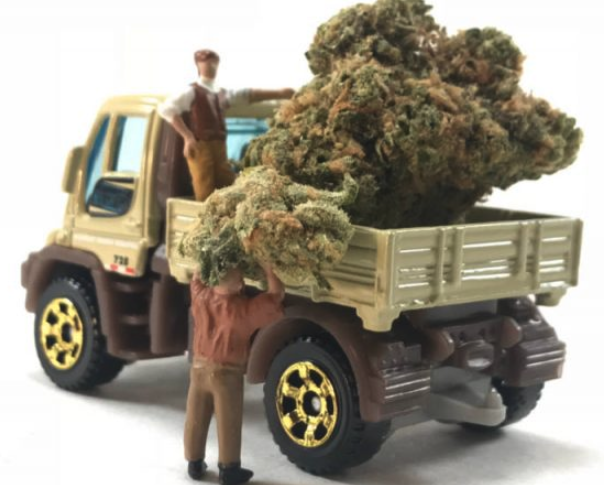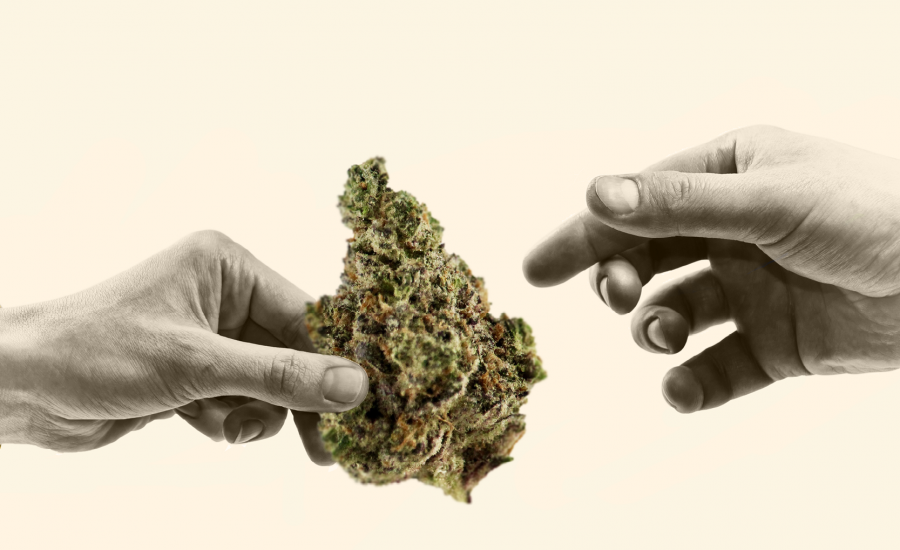As you may have heard in the news, governments whose stay-at-home orders shuttered millions of businesses nationwide have largely exempted cannabis operators from suffering a similar fate. While some people have expressed skepticism, cannabis is an essential need for millions of patients, whether they have a card or have to rely on recreational/adult-use sources to acquire their medicine. But consumers of cannabis, especially those with other conditions, shouldn’t have to risk developing or spreading COVID-19 due to exposure in a line or sales area. That’s why, in order to encourage social distancing, governments have also been relaxing their restrictions on how and where cannabis sales may take place.
Since it’s our job at Simplifya to keep all of our regulatory content current according to the latest cannabis-specific requirements, we’ve been running around like crazy, implementing emergency regulations for 16 states and way more localities (as of this writing, we’ve imported more than 70 COVID-19 guideline updates in the last three weeks). While doing so, we noticed that a lot of the new rules encourage sales to take place outside of the traditional retail sales area. Delivery, pickup orders, and drive-throughs are rapidly becoming not just the norm, but the rule. Though that raises the question, “why weren’t we already doing this?”
Social Distancing Sales Used to be Illegal
Drive-Through
Because it was illegal (duh). Luckily for me, Simplifya has built one of the largest searchable databases of cannabis-specific regulations ever, and I can simply search the states and localities that ban these alternatives to face-to-face transactions. Of the 19 states and 140 localities we cover, drive-throughs are explicitly banned by:
Phoenix, AZ: PZC 623(D)(124)(j) (2019); PZC 627(D)(92)(i) (2019)
Tempe, AZ: TZDC 3-426(C)(4) (2019)
Tucson, AZ: TUDC 4.9.9(E)(1)(f) (2019)
Scottsdale, AZ: SRC App. B 1.403(M)(1)(h) (2019)
Illinois: ILCS 410.705/15-70(p)(7) (2019)
Lower Merion Township, PA: LMTMC 155-71(X)(6)(a) (2019)
California: CCR 16-42-1 5402(c)(2) (2019)
Ohio: OAC 3796:6-3-22(J) (2017)
Boulder County, CO: BCLUC 4-512(I)(5)(f) (2019)
Commerce City, CO: CCMC Sec. 8-2305 (2015)
Las Vegas, NV: LVMC 19.12.070(1.2)(8) (2018)
Port St. Lucie, FL: PSLMC 120.05(E) (2019)
Tulsa, OK: TZC 40.225-E (2018)
Washington: RCW 69.50.390
I omitted any localities that are within states that already banned drive-through sales. Additionally, California allowed pre-existing drive-throughs to be grandfathered in when they were “officially” banned in 2018. Many other governments indirectly ban drive-throughs by mandating that the sales area be within an enclosed structure, or on the “licensed premises” where the definition of licensed premises excludes any parking lots and sidewalks. Those examples were harder to track down, and I’ll be saving them for a future research project. But by looking at existing drive-through dispensaries, we can know for sure that they are allowed in Maryland, Florida, Massachusetts, Colorado, Nevada, sort-of-California, and some of Arizona (most localities in AZ have banned it).
Delivery
Deliveries are much easier to figure out. Because drive-throughs are in a fuzzy area between on-site and off-site sales, not many lawmakers had bothered to focus on the issue, resulting in equally fuzzy laws. Deliveries are explicitly off-site and so you’re more likely to find that issue directly addressed in the law. California and Oregon explicitly allow delivery. Arizona allows it by not regulating it, and Colorado just issued its first delivery permit! A list of every state’s delivery status can be found here, and notably, only Alaska and Washington allow adult-use cannabis while also prohibiting delivery.
 The flip side to deliveries being explicitly addressed by lawmakers is that it makes it harder to ease up on those laws in an emergency. A lot of the emergency rules we’ve seen during the coronavirus operate within the wiggle room that regulatory agencies have. Regulators can generally create any rule they want as long as it doesn’t violate a statute. But because deliveries are generally addressed by statute, we haven’t seen many states authorize delivery under an emergency order. Like Colorado, which is working on rolling out its delivery system, is being held back by statutory language that doesn’t authorize recreational delivery until 2021, as well as language requiring explicit local approval before a permit can be issued.
The flip side to deliveries being explicitly addressed by lawmakers is that it makes it harder to ease up on those laws in an emergency. A lot of the emergency rules we’ve seen during the coronavirus operate within the wiggle room that regulatory agencies have. Regulators can generally create any rule they want as long as it doesn’t violate a statute. But because deliveries are generally addressed by statute, we haven’t seen many states authorize delivery under an emergency order. Like Colorado, which is working on rolling out its delivery system, is being held back by statutory language that doesn’t authorize recreational delivery until 2021, as well as language requiring explicit local approval before a permit can be issued.
Delaware seems to be the only state to completely reverse its rule on deliveries, but other states have used their regulatory flexibility to either loosen restrictions on existing delivery permits or expedite the approval process. Michigan used to require pre-approval before a dispensary could begin deliveries, but has waived that process, allowing all dispensaries to deliver during the emergency. New York and Massachusetts have also relaxed the geographic restrictions that were previously placed on deliverers. Pennsylvania now allows caregivers to deliver to an unlimited number of patients.
Curbside Pickup
 Lastly, “curbside” or just-outside pickups were in such a gray area that I don’t think I ever read a single regulation concerning them until the coronavirus emergency came about. This gray area allows most agencies the flexibility to authorize pickups with the flick of a pen. Colorado did so by changing the definition of “Licensed Premises” to include “the property immediately adjacent to the Licensed Premises and under control of the Licensee.” It’s sort of confusing to include “Licensed Premises” in the new definition for “Licensed Premises,” but you can tell what they’re getting at. During the emergency, nearly every state has authorized pickups to occur on adjacent property that is still under the control of the business.
Lastly, “curbside” or just-outside pickups were in such a gray area that I don’t think I ever read a single regulation concerning them until the coronavirus emergency came about. This gray area allows most agencies the flexibility to authorize pickups with the flick of a pen. Colorado did so by changing the definition of “Licensed Premises” to include “the property immediately adjacent to the Licensed Premises and under control of the Licensee.” It’s sort of confusing to include “Licensed Premises” in the new definition for “Licensed Premises,” but you can tell what they’re getting at. During the emergency, nearly every state has authorized pickups to occur on adjacent property that is still under the control of the business.
Policy Reasons
Ok sure, these types of sales used to be illegal, but that doesn’t really answer your question, does it? Why were they illegal in the first place? As someone who has sat in on multiple rulemaking meetings, I can tell you that most rules center around balancing business opportunities with security concerns and the fear of products ending up in the wrong hands (minors, other states, organized crime). When security is not considered, cannabis operators can’t safely do business, and will generally opt to either stop doing business or reenter the illegal market where violence is already the norm and operating costs are lower. When inventory tracking is not considered, it puts the state’s entire cannabis system under threat of federal intervention. Of the eight priorities listed in the Cole Memo, more than half concern keeping money and products in the hands of authorized parties. So it makes sense that state cannabis systems would implement the heaviest regulations on activities that pose these types of threats.
Every activity mentioned above involves taking cannabis, and sometimes cash, outside of the dispensary’s secured and monitored sales area. That increases the likelihood of diversion and theft. It seems rational to want to restrict these activities that expose cannabis operators to greater risk, but now that the risk of infectious disease is being factored in, the regulatory calculation is yielding a different answer.
Now is the time to see just how large those assumptions about security and diversion were. Most of these emergency authorizations have still come with strings attached; they still require every transaction to be within video surveillance, and still require all of the same ID checks and purchase limits, so it seems like these risks are only marginally increased during the newly-authorized transfers. Hopefully, this emergency will prove that operators can still safely and effectively deliver cannabis to patients and consumers when they are outside the building. And hopefully, the industry will get to keep its new-found freedoms once the emergency expires. But we’ll have to stay tuned to find out…
